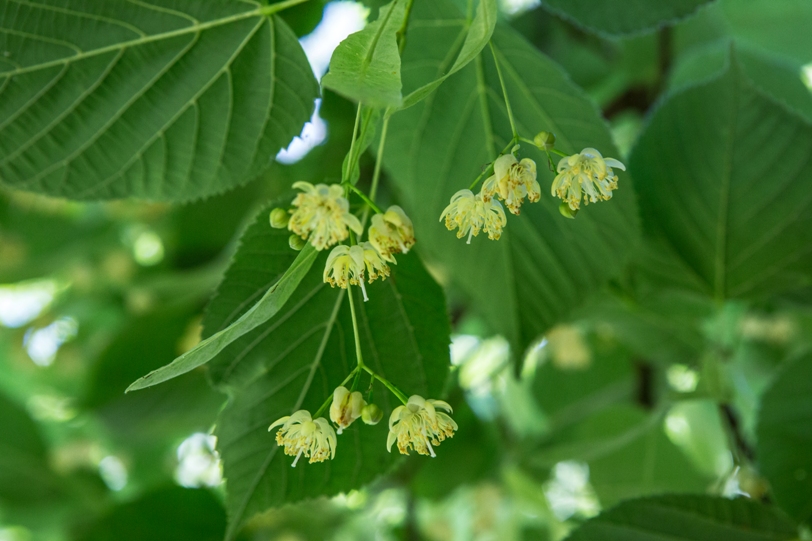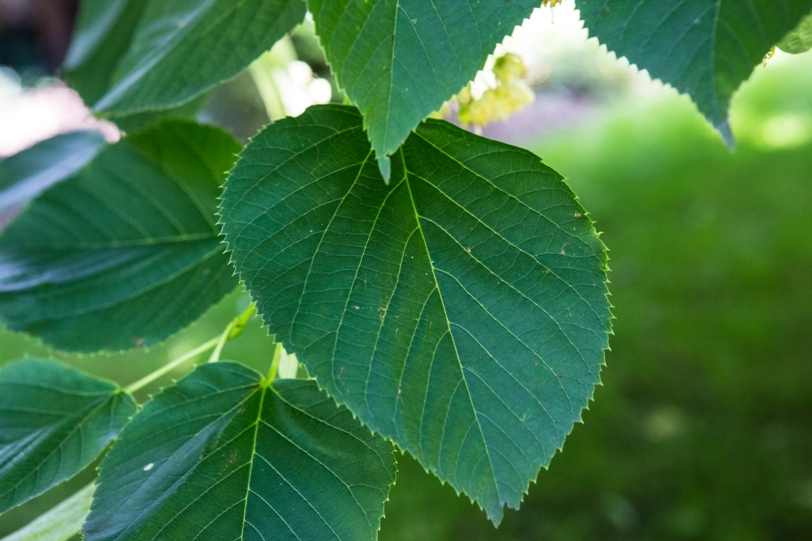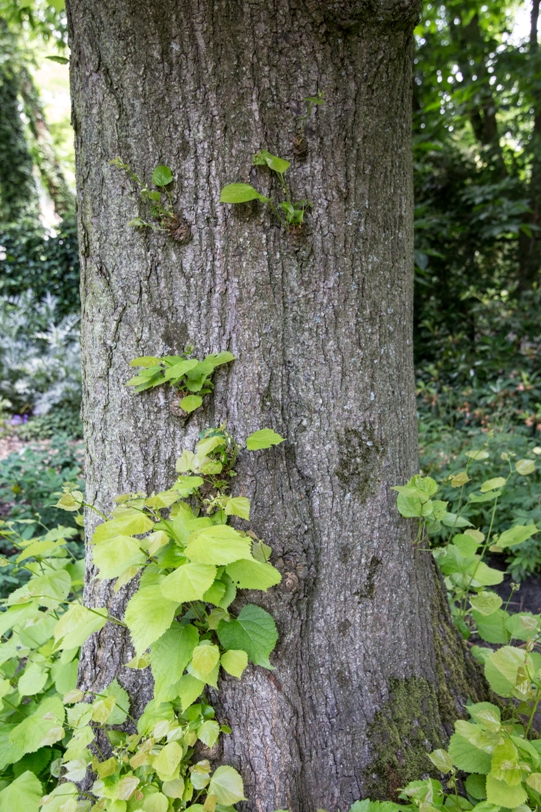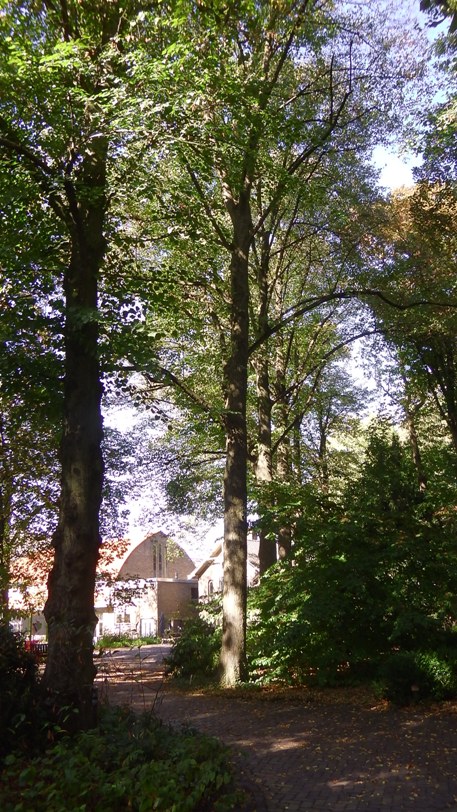common lime or common linden
Tilia × europaea
Mallow family (Malvaceae)
The lime connects
Common lime is a widely cultivated, and much planted, species in the Netherlands. It is a cross between the large-leafed lime and the small-leafed lime although it is unknown when this cross actually happened.
A characteristic of all lime trees is the fusion of the long peduncle (flower stalk) with a bract so that the small flowers either stand or hang in a cluster beneath this bract.
Burrs (deformed growth) can often be seen on the trunk and lower branches of mature common lime trees out of which new growth appears as jumble of twigs. Moreover suckers forming at the base of the trunk also characterize the common lime.
The lime, a tall, erect tree with a rich crown has all the properties necessary to become truly monumental.
Humans and lime trees are strongly linked. The common lime has often been attributed the role of patron of the village. Lime has many positive attributes that people have exploited over the centuries: foliage for feeding livestock, in surgery, in beekeeping and as a supplier of fibre, wood and charcoal.
Lime blossom tea is very tasty and helps with fever and colds.
Themes
Crown jewel in the Botanical Garden Arboretum Oudenbosch.
Tree with strong, sweet smelling flowers.
The young leaves can be eaten raw or cooked; the leaves are often fed to cattle.
Lime blossom tea is an ancient medicine used to induce perspiration in fevers and colds.
Lime trees are real attractants for bees, the tree smells sweet and produces lots of top quality nectar.
After the introduction of Christianity people often carved images of saints from the soft lime (linden) wood, hence the name lignum sacrum - sacred wood. In Greek mythology, Zeus and his son Hermes turned the married couple Philemon and Baucis into a tree after their death as a reward for their hospitality. Baucis was a lime, Philemon an oak.
Fibers from the strong inner bark can be used to make, amongst other things, ropes and mats.
The ancient Germanic people dedicated the lime tree to Freya - goddess of love and fertility, protector of everyone and everything.
Details
| Description: | Tree, on average taller than 12 m. |
|---|---|
| Distributions: | Only found in cultivation. |
| Year cycle: | Perennial (polycarpic decidous) |
| Hardiness: | -4 - 5 f (hardy - very cold winter) |
| Flowering period: | Juni - juli |
| Flower color: | Yellow, white |
| Notes on flowers: | Geelachtige bloemen 3-7 in een tuil, schutblad 7,5-11 cm. |
| Fruiting period: | September - oktober |
| Fruit color: | White, green |
| Notes on fruits: | Light green |
| At its best: | Juni |
Sources
https://www.verspreidingsatlas.nl/2277,http://www.floravannederland.nl/planten/Hollandse+linde,
http://www.bomenstichting.nl/infotheek-en-faq/informatie-over-bomen/hollandse-linde.html,
http://www.soortenbank.nl/soorten.php?soortengroep=flora_nl_v2&id=1519,
Dendrologie van de lage landen - Jan de Koning en Wim van den Broek, Bomen en mensen 30 jaar bomenstichting, Bomen hun vorm en kleur - Dr. B.K. Boom en H. Kleijn Inheemse bomen en struiken in Nederland en Vlaanderen, Bert Maes ISBN 90 85061768 www.flora



